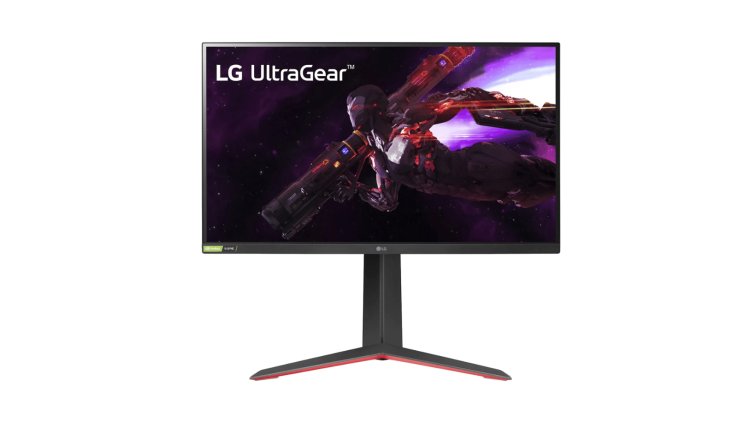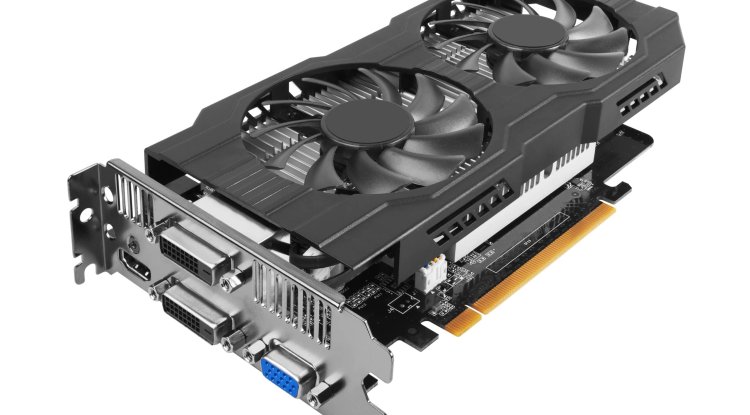LG ULTRAGEAR 27GP850-B: 27-INCH MONITOR

LG's monitor will appeal to a wide range of customers due to its excellent gaming performance and promise in other sectors.
Screen 27 "/ 2,560 x 1,440 (16: 9) / 180 Hz (AMD FreeSync Premium) Matrix type / Backlight Nano IPS (10-bit) / W-LED Contrast / Brightness 1,000: 1/400 cd / m 2 Response time 1 ms (GtG) Viewing angles (hor./vert.) 178 ° / 178 ° Connectors 1x DisplayPort 1.4, 2x HDMI 2.0, 2x USB 3.0, 1x USB 3.0 upstream , 3.5 mm headphone output Warranty 3 years Impression In addition to being one of the best 27-inch gaming monitors on the market, the UltraGear 27GP850-B is capable of performing much more serious tasks
LG's UltraGear 27GL850 display, which turns three this summer, has long been regarded as one of the best 27-inch gaming monitors on the market. That title is currently held by its direct successor, whose name - UltraGear 27GP850 - requires careful examination to distinguish it from its predecessor.
Fortunately, the changes in the monitor's capabilities are far more evident than the model labels would suggest. Furthermore, the UltraGear 27GP850-B appears to be a planned and welcome upgrade.
The UltraGear 27GP850-B features a 27-inch, 10-bit Nano IPS panel with a native resolution of 2,560x1,440 pixels, a refresh rate of up to 180 Hz, a maximum brightness of 400 cd / m 2, and 98 percent DCI-P3 color gamut coverage.
It officially supports FreeSync Premium adaptive sync technology and is also labeled G-SYNC Compatible, assuring that adaptive sync (s) with Nvidia graphics cards are totally proper. Stroboscopic backlight mode is offered, which improves the sharpness of moving objects (at the expense of image brightness), but you won't need to use it in practice.
The LG UltraGear 27GP850-B, in particular, has a great implementation of Overdrive technology, which boosts the stimulus stimulation voltage to expedite transitions. Setting Overdrive to Fast (Settings menu> Game Adjust> Response Time in the OSD) results in almost faultless sharpness of moving objects, one of the best we've observed on an IPS panel.
It is a higher-end gaming monitor, and we want to underline that it much outperforms the unending forest of low-cost models with VA matrices in terms of image clarity and moving-object sharpness.

Virtual sights (conspicuous red and green dot or plus) and the ability to boost the brightness of black to make it easier to discern opponents in the shadows (Settings> Game Adjust> Black Stabilizer) are additional valuable "aids" for playing.
Of course, adaptive sync technology assures absolutely smooth gaming play, with no jerking or the sense of tearing the screen, and the possibility to increase the refresh rate to 180 Hz further adds to the overall impression.
It's funny how the panel refreshes at 165 Hz by default, but activating adaptive synchronization (Settings> Game Adjust> Adaptive-Sync> Extended) and then going to the Settings menu> Game Adjust> Overclock and selecting the "On" preset will suffice. In the operating system, you will then be able to set a screen refresh rate of 180 Hz.
By the way, because of the aforementioned great control performance, all of the menus discussed thus far may be reached fast and effortlessly. Instead of difficult horizontally aligned keys, LG has included a four-way joystick in the center of the lower border of the screen that may be pressed like a key.
By combining it with a well-organized OSD interface, it is possible to obtain a pleasant experience when modifying all essential settings, as well as quick administration of things like picture brightness, volume in connected headphones, input selection, and changing factory picture profiles.
The LG UltraGear 27GP850-B offers everything we would expect from a modern monitor in terms of style and construction. On the backside of the huge, redesigned screen carrier is a cable management slot and a clip.
It is attached to a stable stand in the shape of the letter "V" at the bottom, and it is attached to the screen itself at the top. The stand occupies approximately 43 centimeters in width and 30 centimeters in "depth" on the work surface.
The bracket is designed to allow the screen to be tilted, pivoted by 90 degrees (clockwise), and height changed. The lower edge of the screen is 10.5 centimeters away from the work surface in the lowest setting, and a little less than 22 centimeters away in the upper position.
With this in mind, determining the best working position is simple, independent of the desk's height or shape. Of course, the extremely wide viewing angles of LG's Nano IPS matrices contribute to this as well. The only maneuver that isn't possible is rotating the screen left and right. Of course, the monitor can be installed on a VESA mount as needed, after removing its own mount.

The rear of the screen features a few red, "gaming" details, but LG hasn't tried RGB lighting and accompanying effects this time around. All connectors are positioned near the bracket's connection to the screen.
It has two DisplayPort 1.4 and two HDMI 2.0 connectors, two USB 3.0 ports, a USB 3.0 upstream port (for connecting to a computer in order for the other two USB ports to function), and a 3.5mm headphone connection, and a power connector.
An external adapter is used, which is small enough to fit between two adjacent connectors on the extension bar. Surprisingly, all of the connectors indicated are parallel to the work surface.
Finally, the LG UltraGear 27GP850-B is one of the few monitors without significant problems, equally suited to superb gaming and more important work that, once calibrated, will be completed without hesitation.
While there are probably less expensive 27-inch gaming monitors with a native resolution of 2,560x1,440 pixels on the market, none of them represent such a well-rounded whole, nor do they offer completely equivalent performance.





























